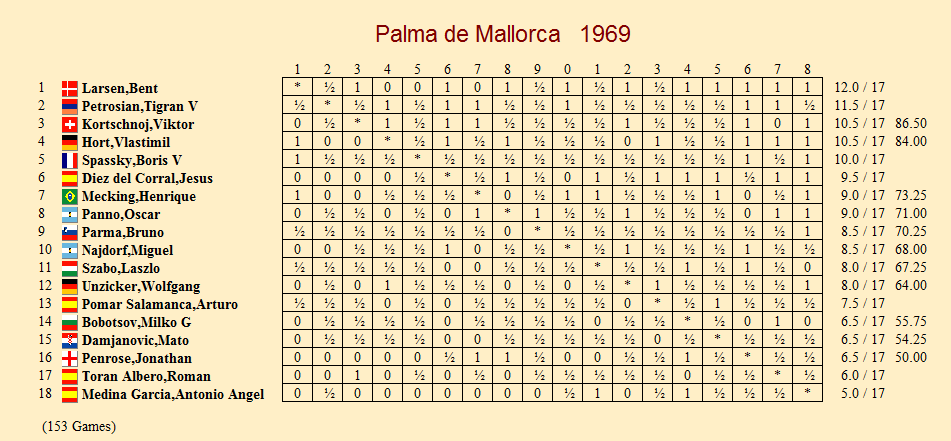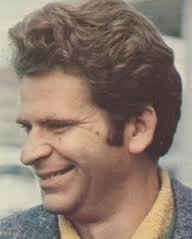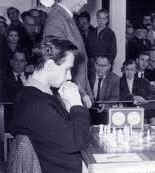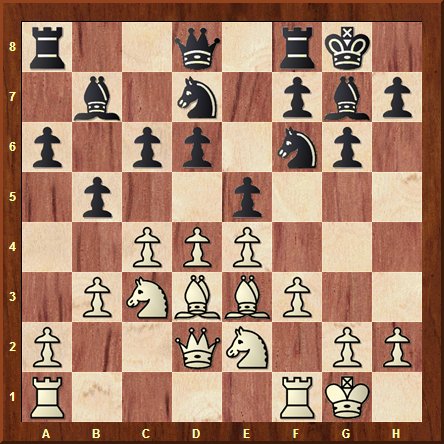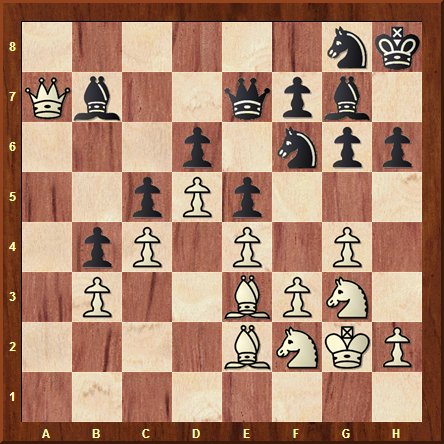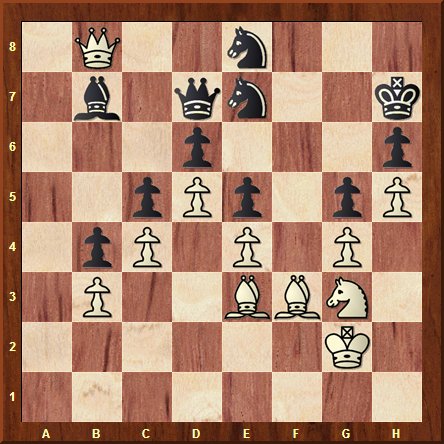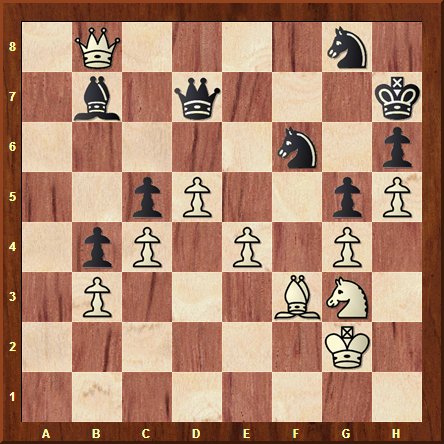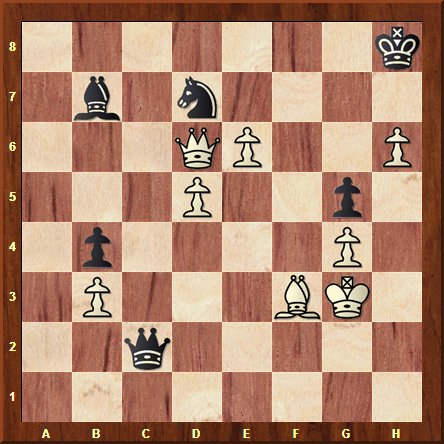All
the |
(Navigation bar
directly below.)
*******
© A.J. Goldsby, 2015.
(All rights reserved.)
****************
Click HERE
to see my
Chess Items.
****************
****************
Buy a book
from Amazon.com
(And help me out as well!)
****************
Click HERE
...
to see a list of the businesses that help to sponsor all of
my chess efforts.
|
|
|
When I saw this game featured as the "Problem of The Day," I knew that I had to annotate it. Boris Spassky was/is one of my top {favorite} chess players of all time ... and I have annotated many of his games before. (Search here - to find other examples of my work.) I am a big fan of Spassky - I once had a site devoted exclusively to his games. (It closed when the "Excite" group folded ... many yarons ago.) Without question, Spassky is a great universal player, I think just about everyone will learn something and truly benefit from an in-depth study of all of Boris Spassky's games. More importantly, just about all of the annotations (that I saw or know of) were "pre-engine," (meaning that all of the work of the analysis for this game had occurred prior to the development of PC's and chess programs / chess engines); which means that there were probably a lot of inaccurate judgments and evaluations written about this game. I did not want to try and do a tremendous "in-depth" view of this game ... Soltis's book probably comes closer to that than what I really wanted to do. What I actually wanted to accomplish was to simply provide an overview for this game and also correct any and all errors that have been made in annotating this game. (For example - my question mark of Black's 47th move is accurate, but also somewhat superfluous ... as Black was already completely lost, and nothing was going to save his position at that point, anyway. Please also note that my annotations do not agree with anyone's one-hundred percent. This is because I relied heavily on what the engine gave as the best moves. I also found Soloviov's annotations to be excellent and more in-depth than any other author. However, I also found a number of his exclamation marks to be totally un-necessary ... in some cases, there simply were not enough viable alternatives to warrant lauding one move over another one., especially when the position was mostly closed and there just were not that many possible candidate moves.) I worked many days on this game ... and overall, I feel that I have done a pretty fair job. Please enjoy this game and also feel free to e-mail me with any comments or observations. |
|
|
|
|
|
Click HERE to see an explanation of the symbols that I commonly use when I annotate any chess game. Click HERE to replay this game. (Click HERE to see a "star-dot-pdf" / Adobe copy of my analysis.) Click HERE to see my video channel on the "You-Tube" channel. (Click HERE to see my YT video on this game.) |
|
GM
Boris V. Spassky (2770) -
IM Jonathan Penrose
(2610) [A.J. Goldsby I] Note
that - when this game was actually played - Jonathan Penrose only had an
IM title and was {later} given the GM title emeritus. This tournament was an enormous
triumph for one of my original chess heroes. However, Spassky shared the
"Best-Played Game" for this effort against IM Jonathan Penrose ... *** *** *** *** *** *** *** *** *** *** *** *** *** *** *** *** *** *** *** *** *** *** *** *** (The)
Source for the ratings
(given for this game) was the
"Chess Metrics" website. 1.d4 Nf6; 2.c4 g6; 3.Nc3 Bg7; 4.e4 d6; 5.f3, (Samisch.) Spassky used this opening system many times in his chess career, although he seemed to play just about every line under the sun. [ The main line is: 5.Be2, see my GOTM site for more on this particular opening. ]
5...c6; (counterstrike / occupies b5 and hits c4) Penrose responds with the time-proven "Byrne System" which is still a good line for Black, even today. 6.Be3 a6; 7.Bd3 Nbd7!;
Black used to push his QNP hereabouts ... until Spassky just about refuted that whole concept in a
game with GM Lubosh
Kavalek.
[ For more on this opening ... and the current state of modern opening theory ...
The "book line" today is 8.a2-a4, however Spassky goes his own way. 8.Nge2 b5; 9.Qd2 Bb7; 10.0-0 0-0; 11.b3 e5; Thus far, according to the chess engines, the position is equal.
r2q1rk1/1b1n1pbp/p1pp1np1/1p2p3/2PPP3/1PNBBP2/P2QN1PP/R4RK1 w - e6 0 12 Black can open the center and can play on either side of the board.
Spassky now plays much like one of his predecessors ... (Siegbert Tarrasch) and simply opts to gain (and keep!) more space ... and also try to prevent Black from playing his standard break of ...f7-f5. (Borislav Ivkov - in the Informant - did not like Nd1, preferring {instead} 13.Na4. However, the difference between the two scores is infinitesimal, so it is really more a matter of taste than a concrete value judgment.) 12.d5! b4; 13.Nd1 c5; Soloviov questions this ...
and recommends (instead) the capture on d5. But the difference between the two
moves (in the estimations
14.g4!? Kh8; 15.Nf2 Ng8; 16.Ng3 Qh4!?; (foray)
Black's last move was a little risky, DF14 prefers ...P-QR4. 17.Kg2 h6; 18.a3! a5; 19.Ra2! Ndf6!?; (dubious?)
Black goes for piece play ... but the computer finds a slightly more logical response ...
[ The following line: (>/=) RR
19...Rfb8; 20.Rfa1 Qd8!;
21.h4, "+/="
Now, thanks to his previous preparations, White penetrates down the a-file and trades off both sets of Rooks. 20.Rfa1 Nh7!?; 21.axb4 axb4; 22.Rxa8 Rxa8; 23.Rxa8 Bxa8; 24.Qa2 Bb7; 25.Qa7,
This was good enough for a solid advantage, although simply 25.g5!, (which many of the engines find right away); may represent a [ >/= 25.g5! Nxg5; 26.Qa7, '±' ('+/') ]
25...Qe7; 26.Be2! Nhf6; White is solidly better here, although the severely blocked nature of the position indicates that Black may gain a draw unless White plays accurately.
6nk/Qb2qpb1/3p1npp/2pPp3/1pP1P1P1/1P2BPN1/4BNKP/8 w - - 0 27
The position (above) shows a classic space advantage for White ... which Spassky begins to exploit in superlative fashion. 27.f4! exf4; 28.Bxf4 Ne8[]; 29.Qb8 Bd4!?; 30.Nd3 f6; 31.Bf3 Qd7; 32.h4, ('!?') This is good, some writers even award this move an exclam. However, Houdini & Deep Fritz 14 seem to find a better and quicker way to win for White ... (see just below).
[ Probably best was: >/= 32.Ne2! Be5;
33.Nxe5! fxe5; 34.Bxe5+!! dxe5;
Now the box seems to show that 32...Bc8[]; was best for Black, missing this, Penrose finds himself in even greater 32...Kh7; 33.h5!? g5; 34.Bd2 Be5!?; 35.Be3 Ne7; DF14 likes this as Black's best move. (Soloviov recommends ...Qc8; here as the best move for Black.)
36.Nxe5 fxe5; The critical position ...
1Q2n3/1b1qn2k/3p3p/2pPp1pP/1pP1P1P1/1P2BBN1/6K1/8 w - - 0 37
Black is so tied up that it is only natural that a sacrifice would destroy the organic balance of the position. (The box likes 39.Qb2, for White, but the difference in evals is not great.) 37.Bxc5!! dxc5; 38.Qxe5 Ng8; 39.Qb8 Nef6?; (error) This move was a mistake and is exploited by Spassky in his typically ruthless fashion.
1Q4n1/1b1q3k/5n1p/2pP2pP/1pP1P1P1/1P3BN1/6K1/8 w - - 0 40 Black has a small material edge, a minor piece for two Pawns. However, White's central wedge of foot-soldiers threatens to simply advance with devastating effect.
[ After the following continuation:
>/= 39...Ngf6[]; 40.Nf5 Qc8;
41.Qe5 Qd7; 42.Ne3,
'±' ('+/')
40.Nf5! Ne7; 41.Nxh6! Nexd5!; A nice tactic, simply capturing with the Black King loses to Qf8+, when Black's position is nearly resignable.
42.cxd5, This wins, but ...
[ RR
All of the engines show that: >/= 42.exd5! Kxh6;
43.Qf8+ Qg7; 44.Qxc5, '+-'
(decisive)
42...Kxh6; 43.Qf8+ Qg7;
44.Qxc5 Nd7; (Hmmm.) >/= 44...Kh7[]; was better, although even after an exchange of Queens, White can march his King to the center and I could not find any way for Black to save his position. (Most of the engines show that Black had to play >/= 47...QxP/e5[]; failing this, his game falls completely apart.) 45.Qd6+! Kh7; 46.e5! Kh8; 47.h6! Qh7?; 48.e6! Qc2+!?; 49.Kg3, "+/-" Black Resigns. Penrose gives up, he can (now) see that White will promote his e-pawn.
7k/1b1n4/3QP2P/3P2p1/1p4P1/1P3BK1/2q5/8 b - - 0 49 An incredible game by Spassky, who shows great technique and gives a model lesson in how to exploit this type of <standard> advantage in space. [
Bibliography - or some books where you can find this game
annotated:
(And) See also the excellent book: "Boris Spassky's Selected
Games," (400)
Copyright (c) A.J. Goldsby, 2014. All rights reserved.
1 - 0 |
The
analysis for this page was prepared with the excellent program,
ChessBase
10.0.
(I
now have ChessBase 11.0; I also used MANY different chess engines ... during the
course of my analysis!)
---> My main engines - for this game - were Deep Fritz 14,
Houdini 3.0, Rybka 4, Fritz 13.
The HTML was polished with several different tools and programs, (mostly FP) ... the text was checked for spelling with MS Word.
|
Go ... or return ... to my Home Page for this site. Go (or return) ... to my "Annotated Games" (II) Page. Go
... or return ... to my "Best
Games" Page. ******* Copyright
(c) LM A.J.
Goldsby I ******* This
page was first generated in: mid-September,
2014. |

